Burundi
Burundi, in long form the Republic of Burundi, is a country in East Africa without access to the sea, but having a large shore on Lake Tanganyika, located in the Great Lakes and surrounded by the Democratic Republic of Congo to the west, Rwanda to the north, and Tanzania to the east and south. Its capital is, since February 4, 2019, Gitega. Bujumbura, the former capital and the most populous city in the country, is the economic capital.
Burundi’s history
The first archaeological traces of a Burundian state date back to the sixteenth century in the east of its current borders. From 1903, Burundi became part of German East Africa. After the First World War, the country fell into the fold of the Belgian colonial Empire which was supported by the Tutsi aristocracy. The independence of the country is proclaimed on July 1, 1962, the date then chosen to celebrate the national holiday, and King Mwambutsa IV establishes a regime of constitutional monarchy which will be abolished in 1966. “The Tutsi tribe, which accounts for between 10 and 15% of the population, dominates and strips their rights there of that of the Hutus, who are five to six times more numerous. The central political power remains a Tutsi monopoly. In 1987, 13 out of 15 provincial governors were Tutsi, and the entire army too. Clashes took place between Tutsis and Hutus in the 1960s. In 1972, the Hutu insurrection against the dictatorial regime of President Tutsi Micombero was severely repressed, the massacres reached several tens of thousands of victims among Hutus (estimate 100,000 ).
The latent conflicts between Tutsis and Hutus continued in the 1970s and 1980s and led to the Burundian civil war in 1993. At the start, thousands of Tutsi civilians were massacred by their Hutu neighbors. Then the army reacts very violently as in 1972, and engages in a very harsh repression and massacre of the Hutus. A total of 50,000 to 100,000 people (mostly Hutu) are killed. A new, transitional constitution was promulgated on October 28, 2001, establishing an “ethnic” alternation of power, the presidency and vice-presidency changing every 18 months, alternating Tutsis and Hutus. The Arusha Agreement comes into force on November 1, 2001, ending the conflict. The CNDD-FDD (Hutu) came to power in 2005, winning the legislative elections of July 4, 2005. During the presidential elections of August 19, 2005, the National Assembly and the Senate united in congress elected Pierre Nkurunziza president for a mandate of 5 years re-eligible only once. 162 parliamentarians vote for Nkurunziza, 9 against and 2 abstain. These elections constitute the final stage of the peace process. Five years later, an extraordinary congress of the National Council for the Defense of Democracy / Defense Forces for Democracy (CNDD-FDD) designates on April 24, 2010, Pierre Nkurunziza as CNDD-FDD candidate to run for a second term in the head of the country in the presidential election of June 28, 2010. Opposition leaders are arrested, and this opposition refuses to participate in the poll. The campaign was peppered with incidents, several members of the opposition were arrested. Pierre Nkurunziza was re-elected president with more than 91% of the vote, the only candidate in the election. In 2015, Pierre Nkurunziza imposed himself in April as the candidate of power for the presidential election of June 26, 2015. This decision is contrary to the constitution of Burundi, promulgated in March 2005. His candidacy is nevertheless validated by a controversial decision of the Constitutional Court. A new political crisis, interspersed with violence, is opening.
In May 2015, an attempted coup failed. This attempt engendered a bloody repression of the opposition on the part of the president, with hundreds dead and hundreds of thousands of Burandans taking refuge outside the country. After several postponements, the presidential election, deemed illegal and rigged by all observers of Burundian politics, is finally held in July. On July 24, the independent national electoral commission proclaimed Nkurunziza the winner with 69.41% of the vote. The economic situation continues to deteriorate. In early 2020, General Évariste Ndayishimiye was nominated as candidate for the presidential election of May 20, 2020 by the ruling party, to succeed Pierre Nkurunziza.
Burundi’s politics
Burundi is a multi-party republic with a presidential system where the President occupies the offices of head of state and head of government. Executive power is in the hands of the government while the two chambers of Parliament (Senate and National Assembly) share legislative power with the government. The National Assembly has 121 seats distributed in 17 constituencies. Among the deputies, 100 are elected by direct universal suffrage. 60% of them must come from the Hutu group and 40% from the Tutsi group and have at least 30% women. If these quotas are not reached, as many additional Members as necessary to fill them are co-opted. Three additional seats are also reserved for Twa deputies to coopter. The Senate is composed of two members per province, a Hutu and a Tutsi, elected by the municipal councils, three people from the Twa ethnic group and former heads of state. It must also include at least 30% women. If necessary, co-optation can be used to reach the quotas. Burundi is a member of the International Organization of the Francophonie as well as of the Parliamentary Assembly of the Francophonie.
Burundi’s economy
Burundi’s economy is mainly rural and is based on agricultural exports and livestock. Agricultural production is divided into products for export, such as coffee, tea and cotton, and food crops. The coffee sector represents the country’s primary resource (80% of exports). Burundi was also the eighth on the list of African tea producers at the start of the 2010 decade, dominated by Kenya. The population depends on more than 90% of this agriculture, which represents more than 50% of the GDP (800 million dollars in 1999). Industry accounted for 18% of GNP in 1999, and services 32%. The active population doubled between 1990 and 1999, from 2 million to 4 million; one in two workers is a woman. Child labor is regularly denounced as being common in Burundi. Recently, Burundians have been betting on tourism. Burundi is a signatory to the international treaty on plant genetic resources for food and agriculture.
Burundi’s demography
In 2019, the population of Burundi is estimated at 12 million inhabitants, its growth rate in 2016 was 3.3%. At the last census in 2008, the country had 8,053,574 inhabitants, of whom 497,166 lived in Bujumbura, the former capital. The median age is 16.9 years and the proportion of those under 15 corresponds to 46% of the country’s total population.
Burundi’s language
The official languages of Burundi are Kirundi and French. In August 2014, the National Assembly passed a law making English a third official language, this law has not yet been promulgated. Both languages of instruction, to which Kiswahili is added although it is not an official language of the country. French remains, however, an elite language, spoken by less than ten percent of the population. As for Swahili, the regional Bantu language, it is above all spoken by traders and remains mainly confined to urban areas.
-
Burundi
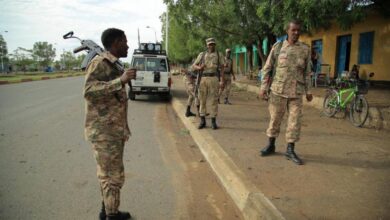
Burundian Government To Deploy 100 Soldiers To Conflict-Hit Eastern DR Congo
The Burundian government is set to deploy 100 soldiers to the volatile eastern part of the Democratic Republic of Congo…
Read More » -
Burundi
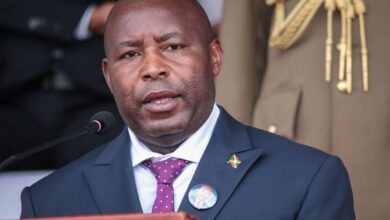
EU Lifts Sanctions Against Prime Minister Ndirakobuca & Two Others
The European Union (EU) on Tuesday announced it has lifted sanctions on three Burundians, including Prime Minister Gervais Ndirakobuca, reported…
Read More » -
Burundi

Burundi’s Parliament Approves New PM As President Alleges Possible Coup
Burundi’s parliament on Wednesday approved the appointment of a new prime minister after President Evariste Ndayishimiye sacked his prime minister…
Read More » -
Burundi

EU Lifts Its Suspension Of Financial Aid To Burundi’s Government After Seven Years
The European Union (EU) on Tuesday announced it has decided to lift sanctions on Burundi that were imposed in 2016,…
Read More » -
Burundi

US Removes Sanctions On Burundi After Six Years As Situation In Country Improves
The United States (US) government on Thursday removed sanctions imposed on Burundi six years ago, owing to a successful election,…
Read More » -
Burundi
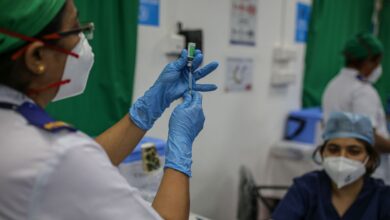
Burundi Begins COVID-19 Vaccination Campaign After Most African Countries
Burundi finally launched the COVID-19 vaccination campaign on Monday, months after most African countries, reported The BBC. The vaccination began…
Read More » -
Burundi

Burundi Welcomes European Union’s Decision To Lift Aid, Financial Sanctions
Burundi has welcomed the European Union’s (EU) decision to lift aid and financial sanctions imposed on the country, reported Africa…
Read More » -
Burundi
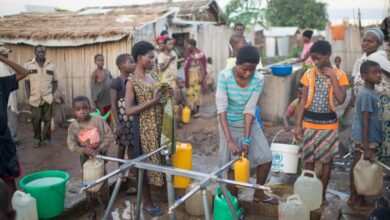
UNHCR Makes Urgent Appeal For Fund In Crucial Support For Burundian Refugees
The United Nations Office of the High Commissioner for Human Rights (UNHCR) on Tuesday made an urgent appeal for $222.6…
Read More » -
Burundi
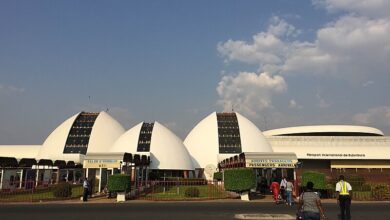
Burundi: Government Decides To Reopen International Airport On November 8
Burundi government on Tuesday said that it has decided to reopen the country’s international airport on Sunday, Nov. 8, almost…
Read More » -
Burundi
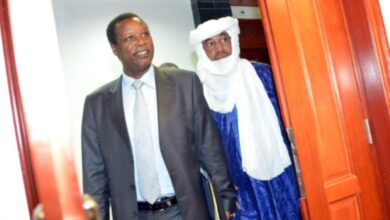
Burundi: Former President Pierre Buyoya Rejects Life Sentence For Murder
Burundi’s ex-President Pierre Buyoya on Wednesday rejected a life sentence he received in absentia by a top court over the…
Read More » -
Burundi
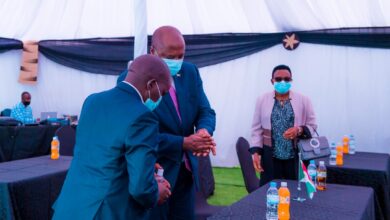
Rwanda, Burundi’s Foreign Ministers Meet To Improve & Restore Bilateral Relations
High-level delegations from Rwanda and Burundi met on Tuesday and agreed to start talks to end tensions between the neighboring…
Read More » -
Burundi
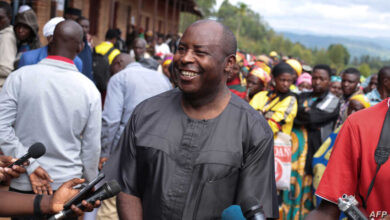
Burundi: President Evariste Ndayishimiye Vows To Tackle Coronavirus Seriously
Burundi’s new President Evariste Ndayishimiye has promised that his government will take the ongoing coronavirus pandemic seriously unlike his predecessor…
Read More » -
Burundi

Burundi: Election Winner Evariste Ndayishimiye Gets Sworn In As New President
Evariste Ndayishimiye was sworn in as Burundi’s new president on Thursday, reported Reuters. He was sworn in early following the…
Read More » -
Burundi
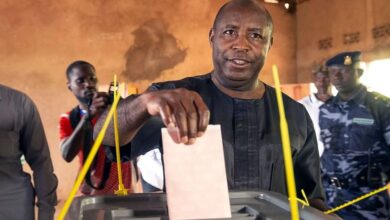
Burundi: Constitutional Court Rules President-Elect To Take Power Immediately
Burundi’s Constitutional Court on Friday has agreed that president-elect Evariste Ndayishimiye should be sworn in as soon as possible after…
Read More » -
Burundi

Burundi Government Confirms President Pierre Nkurunziza Has Died Of Heart Attack
The Burundi government on Tuesday confirmed that outgoing President Pierre Nkurunziza has died of heart failure, two months before he…
Read More » -
Burundi
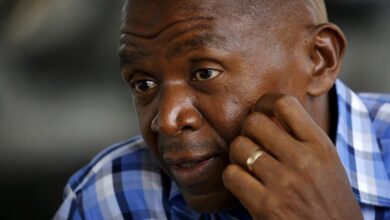
Burundi Opposition Leaders Reaches Court Over Presidential Election Irregularities
Burundi’s main opposition leader on Thursday made an appeal to the constitutional court challenging the results of the recently held…
Read More » -
Burundi

Burundi: Evariste Ndayishimiye Wins Presidential Election With 69% Vote
Burundi’s electoral commission on Monday announced ruling party candidate Evariste Ndayishimiye as the winner of the presidential election held last…
Read More » -
Burundi
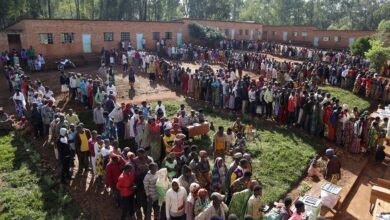
Burundi: Opposition Party Claims Police Detain More Than 200 Election Observers
Burundi’s main opposition party, National Freedom Council (CNL), said on Friday that the police detained more than 200 opposition electoral…
Read More » -
Burundi
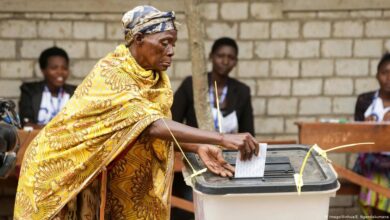
Burundi All Set For Wednesday’s Presidential Election Amid Coronavirus Pandemic
Burundi is all set to hold presidential elections on Wednesday even amid the ongoing coronavirus pandemic, reported Washington Post. The…
Read More » -
Burundi
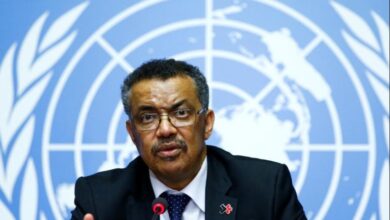
Burundi Government Expels Four WHO Coronavirus Officials As Election Approaches
The Burundi government on Thursday ordered the World Health Organization’s (WHO) expert team coordinating the coronavirus response in the country…
Read More » -
Burundi
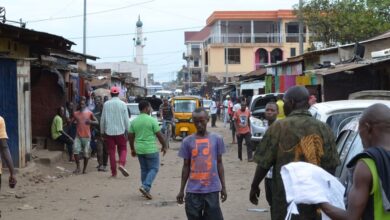
Burundi Police Says It Killed At Least 22 Evil-Doers In Pre-Election Violence In Bujumbura
Burundi police on Tuesday said at least 22 “evil-doers” have been killed in clashes between the security forces and an…
Read More »

